Menzies pseudo-slug: description of varieties and secrets of growing
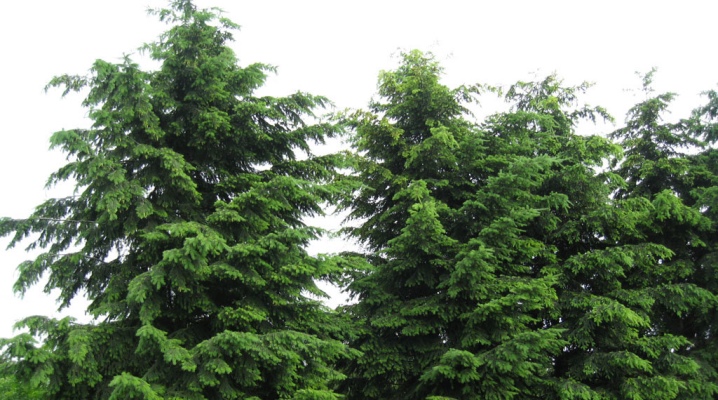
Menzies' pseudo-lifespan or Blue Wonder is referred to as pine trees. The tree differs from its counterparts in uniformity of color, as well as needles throughout the year. This plant is most often used by designers in the preparation of landscape compositions.
Description
The homeland of decorative blue spruce is China, Japan, North America. This drought-resistant shade-tolerant tree has a cone-shaped crown. The branches of the Menzies pseudo-slug are similar to fir and spruce. The tree has soft needles and hanging cones. With the aging of this representative of the flora, the crown changes to a flat-topped type.
A powerful and beautiful plant usually has a height of about 0.5 meters, in natural conditions it is one meter. The trunk girth of a pine representative can reach 5 meters. Douglas fir has an annual growth rate of 0.4 meters in height and 0.2 meters in width. The bark of the tree has a brownish-gray color; in young representatives it is smooth, and in old ones it is wrinkled, lumpy.
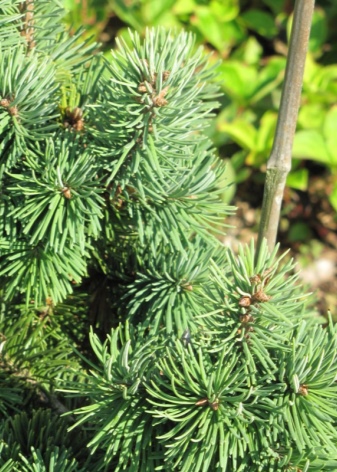
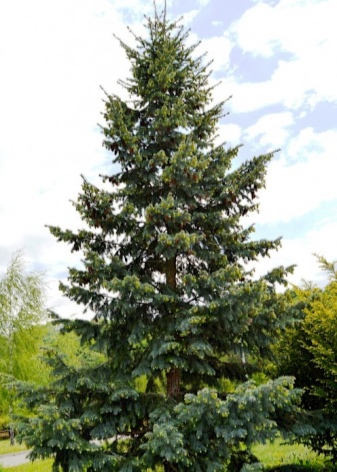
Needles dark gray needles have a flattened straight type, its length can reach 2-3 centimeters. Hanging egg-shaped bumps can grow up to 10 centimeters. The life span of Douglas is about 500 years. This tree has solid wood.
This representative of pine prefers fresh, moist, drained clay soil, can grow well in a moderately dry place and sandy-clay substrate.
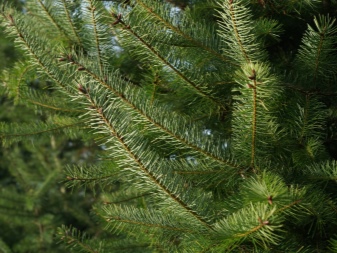
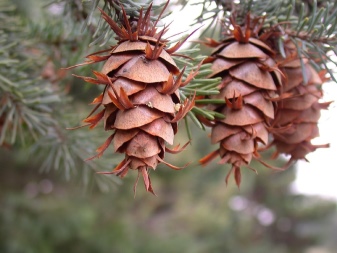
Varietal variety
Currently, Menzies' pseudo-slug has about 3 dozen varieties. The most common are the following.
- Holmstrup. This type of yew-leaved fir was bred in Denmark in 1962. The tree is characterized by slenderness and slow growth. The maximum plant height is often less than 5 meters. Douglasia has a dense, tapered crown and raised branches. The color of the needles has a rich green color.
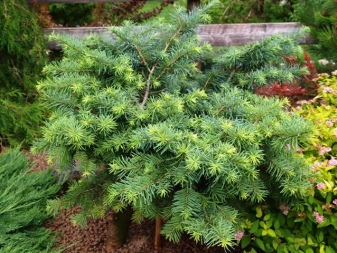
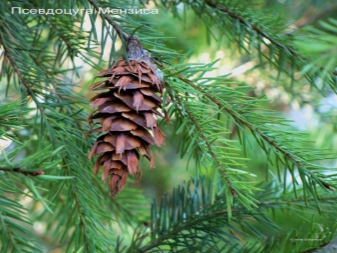
- Serpentine. The German variety is characterized by a vertical, twisted trunk, the twisting branches of which give the tree a showiness and originality.
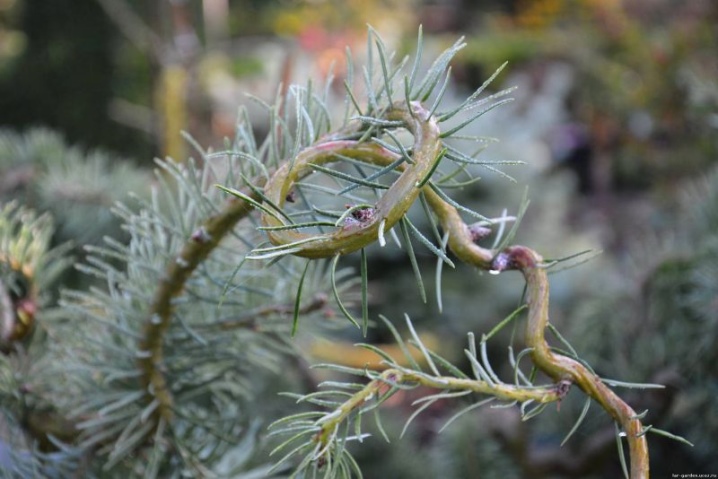
- Fastigiata is a tall plant with a dense narrow pyramidal crown. The gray branches are raised up.

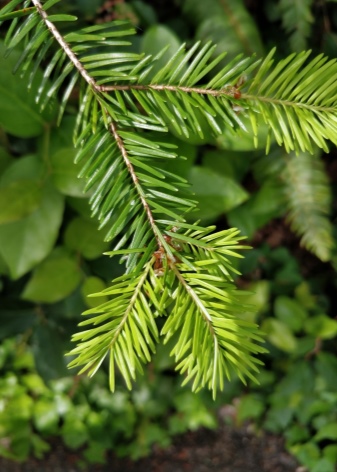
- Glauca pendula was bred in 1891. A low tree has a weeping crown. The originality of the plant is given by the hanging top, which makes the plant look like a weeping willow. This Yew-leaved fir has an unusual, well-defined blue hue.
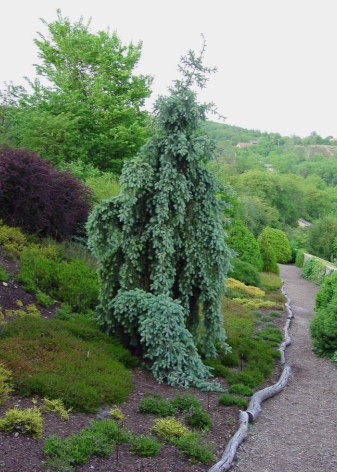

Planting and growing
Menzies' pseudo-lifespan is referred to as unpretentious representatives of the flora. However, the tree still has some requirements. The peculiarities of cultivation include a dislike for sand and clay, as well as the possibility of growing on podzolic and carbonate soil. The optimal composition of the substrate for Douglas is considered to be leafy soil, peat, humus in proportions of 3: 2: 2.
When planting a seedling, the bottom of the hole should be filled with a drainage layer, which may consist of brick pieces, expanded clay or sand. Since this plant is light-loving, it should be planted in an open area with moderate lighting.
Young pine trees need to be shaded from intense sunlight.


Reproduction of Menzies' pseudo-slugs is possible in such ways.
- Growing from seeds. The formation of planting material occurs every 3 years.The seeds are able to mature during the growing season. At home, fir seeds are embedded in the substrate to a depth of 2 centimeters. In the container, the planting material will germinate for 5 years. When the seedlings reach the desired size, they are planted in the soil.
- Cuttings. This procedure requires you to cut a 3- or 4-year-old side shoot from a tree in the spring. The cutting should have a small piece of wood near the base. The cut planting material should be immediately immersed in a growth-stimulating solution, and then planted in the ground, where there are mulching components.
Growing Douglasia from seeds is considered a long-term, but at the same time, reliable option. The tree that grows this way is usually more robust and resilient.
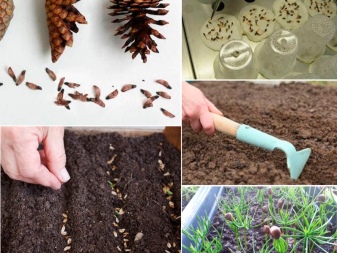
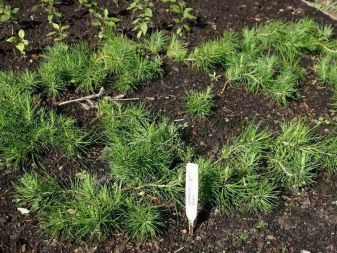
Care
Caring for a plant does not mean anything complicated. Only a seedling that has recently been planted in the soil requires special attention. A young plant needs shading, as fragile needles can suffer from sunburn. To prevent frostbite, the tree should be covered with non-woven material. This protection can only be removed with the onset of summer.
Adult Douglas are not harbored for the winter season. Such a plant requires tying up spreading branches to prevent them from damaging under a snow embankment. During planting, gray fir is fertilized with a complex of fertilizers that are intended for coniferous representatives of the flora. This procedure is carried out in the spring.
5 years after planting, peat or humus must be added to the substrate under the plant for its greater nutritional value. The trunk circle must be loosened on an ongoing basis, as this promotes better oxygen penetration to the roots. Blue Wonder is good at pruning. In the first years of life, the side shoots of the tree need to be cut. This procedure is able to stimulate the growth of a dense and luxurious crown.
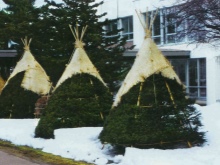

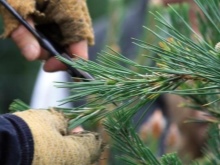
The tree needs regular watering. Fir should be irrigated when the soil dries up. Normally, one coniferous representative has 10-12 liters of water. In dry weather, a young tree, like an adult tree, must be sprayed with cool liquid. Douglas fir is resistant to diseases and pests, only in some cases it can be attacked by fungal infections and aphids.
The fungus has the ability to attack the root system of the plant. Its appearance may be the result of excessive moisture or contamination from neighbors. At the first signs of the disease, you need to establish the cause and eliminate it.
As a treatment, it is worth using antifungal drugs, for example, "Baktofit" or "Vitaros". Aphids are discouraged by a pungent coniferous smell. But if this parasite nevertheless attacked the tree, then you should immediately use such drugs as "Aktara", "Commander"
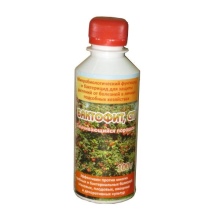


Application in landscape design
Landscape designers often use Menzies' pseudo-leisure in the design of the territory. It is an excellent representative of the flora, characterized by its versatility. The tree can be planted in a small garden, while pruning the side shoots. An openwork appearance is observed in the vicinity of Douglas with a rocky juniper, spherical blue spruce, larch, and berry yew.
In addition to the composition with Blue Wonder, you can plant nearby deciduous bushes that have small foliage, for example, barberries, privet, euonymus, bush-shaped plums, Japanese kerrias, lilacs look beautiful.
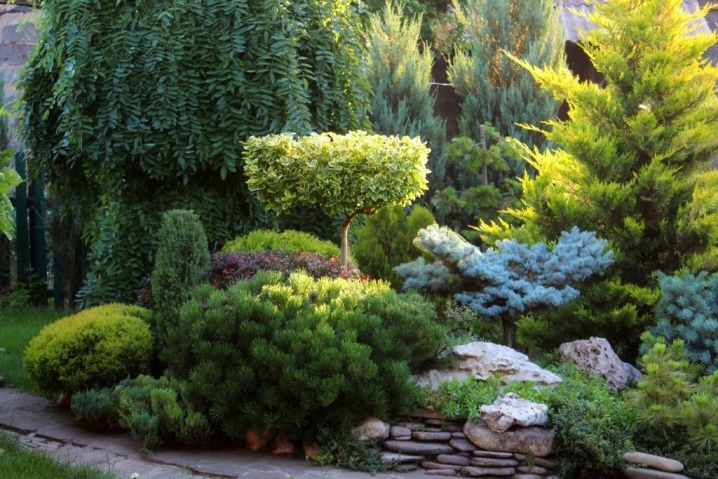
The planting of a decorative blue spruce and varietal rose hips looks original, which has dissolved its unusual flowers.
Douglas fir can be well complemented by horizontal or Cossack juniper. A flowering perennial, an ornamental cereal nearby with a gray conifer looks very interesting. Many landscape designers often complement Menzies' pseudo-luggage with large decorative boulders or mounds of stones.
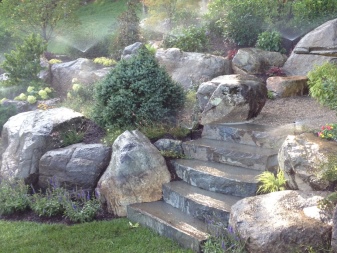
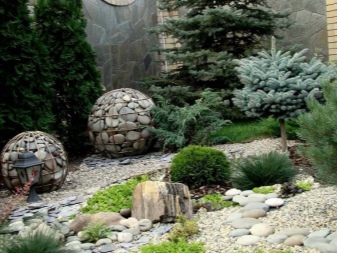
Blue Wonder can be attributed to those representatives of the flora that are able to combine unpretentiousness, decorativeness, simple care measures. This ephedra can become an excellent decoration for your personal plot for many years. Some people collect the cones of the plant and make tinctures from them, which are subsequently taken for medicinal purposes.
In cosmetics, it is used as an anti-aging, regenerating, moisturizing and healing agent.

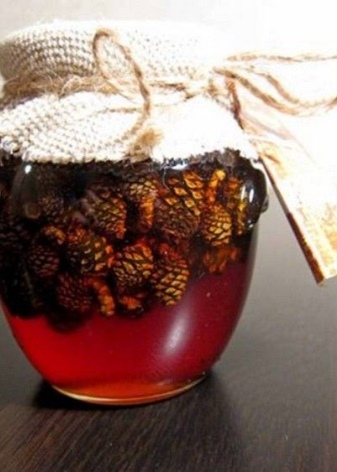
An evergreen coniferous plant looks spectacular and unique in any type of area. You can create a landscape composition with an artistic effect with the help of Douglas Tissol. In any case, when planting this plant, gardeners do not lose, since this prickly beauty looks great not only growing alone, but also as part of groups or compositions with other trees and bushes.
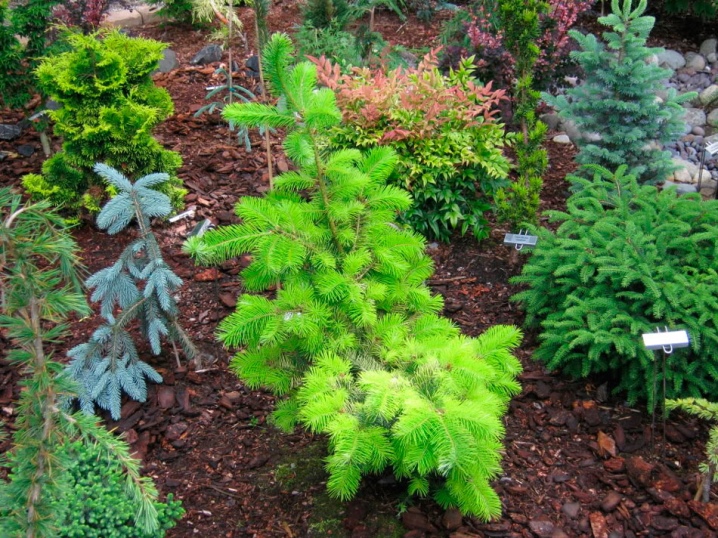
You can take a closer look at this tree further.



































































The comment was sent successfully.